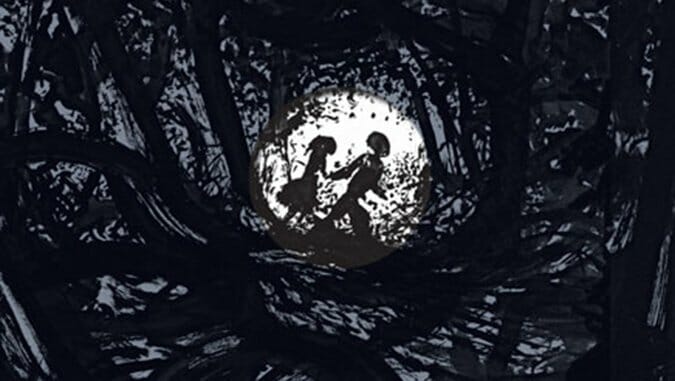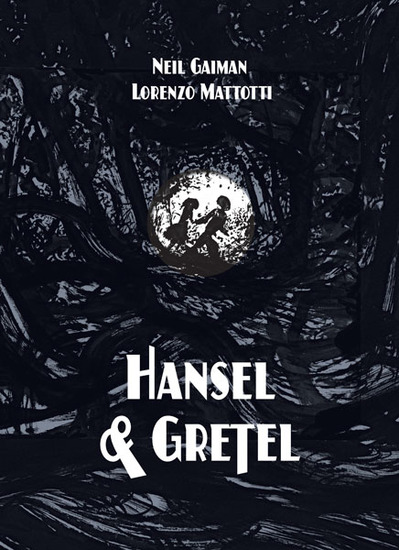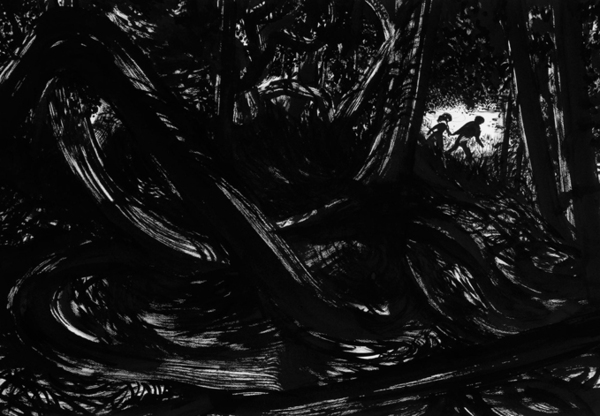
Writer: Neil Gaiman
Artist: Lorenzo Mattotti
Publisher: TOON Books
Release Date: October 28, 2014
Neil Gaiman foreshadowed his new rendition of Hansel & Gretel in, of all places, a review he wrote for The New York Times on The Annotated Brothers Grimm. Commenting on editor Maria Tatar’s in-text commentary, Gaiman notes that “”Hansel and Gretel” is a tale driven by food and hunger from a time when, for the peasantry, eating until you were full was a pipe dream.” Unsurprisingly, the author behind such modern fairy tale classics as Stardust and The Ocean at the End of the Lane opts for a sharp, untempered fantasy with a foundation firmly rooted in harsh realities. Reinterpretations, as far as fairy tales are concerned, are par for the course, especially considering that the Brothers Grimm were consumate collectors and retellers — not original authors. Also unsurprising, the best parts of this lithe, 49-page picture book are often its least familiar.
Within the tale of two lost, starving children who outwit an old woman in a house comprised of various desserts, Gaiman uses a newfound sense of context and logic that bolsters the whimsical elements of this classic yarn. Most of the innovation occurs in the story’s beginning pages. For example, Gaiman notes that the children don’t attend school because they’re simply too poor, the progeny of a rural wood cutter left impoverished by famine (supposedly the Great one of 1315) and thieving soldiers. Even the choice to reinstitute the mother as the force behind the children’s forest exile is a bold one; the Grimms initially shifted that role to a stepmother to protect the sacredness of motherhood for complaining parents in 19th century Germany. Also: the mother’s pregnant with a third child, forcing her to do some ruthless starvation math for the sake of self preservation. This simple redesign provides new motives to propel the story forward, adding a poignant desperation and complexity to the timeless tale.
This tactic also applies to the infamous baddie. Though she’s never expressly called one, the witch subtly reveals her own background — a weathered woman physically incapable of catching live animals for her meals. She even promises to tutor Gretel as her own daughter, raising her as magical cannibal woman who can “call the birds down from the trees.” This is the moment where Hansel & Gretel reaches an interesting fork; Gaiman refines and buffers Hansel & Gretel with fresh elements that are so intriguing, the story could (should?) almost evolve into a new tale entirely. I almost wished Gretel would have assumed an unholy apprenticeship with the witch, Hansel be damned to both of their bellies.
Ultimately, this darker, fleshed-out rendition finds an interesting home in Toon Books, the same imprint where Jeff (Bone) Smith crafted a story about a cartoon mouse getting dressed in the morning. Not only is this a very adult version of a children’s tale, it also excludes the story’s most whimsical beats, including Hansel buying time during his initial woodland trek by looking back at imaginary kittens, as well as magical ducks that ferry grown children across lakes. Gaiman is fully aware of this tonal decision (not an uncommon subject for his work), and to think that children shouldn’t be an audience to it fundamentally devalues their intuition. Hansel & Gretel does an excellent job of answering the perpetual ‘whys’ inherent in the story’s anatomy, even if the answers aren’t the most optimistic. Nothing quite veers into senseless violence or barbarism; the physics of adulthood just poke their head up far more than in previous versions, save the first.
Artist Lorenzo Mattotti’s full-page illustrations make the story’s darkness literal; sprawling, impressionistic swaths of black ink flood the characters. It’s absorbing, challenging work that captures the ambiguous sensation of eyes adjusting to the night. This direction in tandem with Gaiman’s words returns Hansel & Gretel to its morbid roots, charting a new path into familiar woods with engrossing results.


